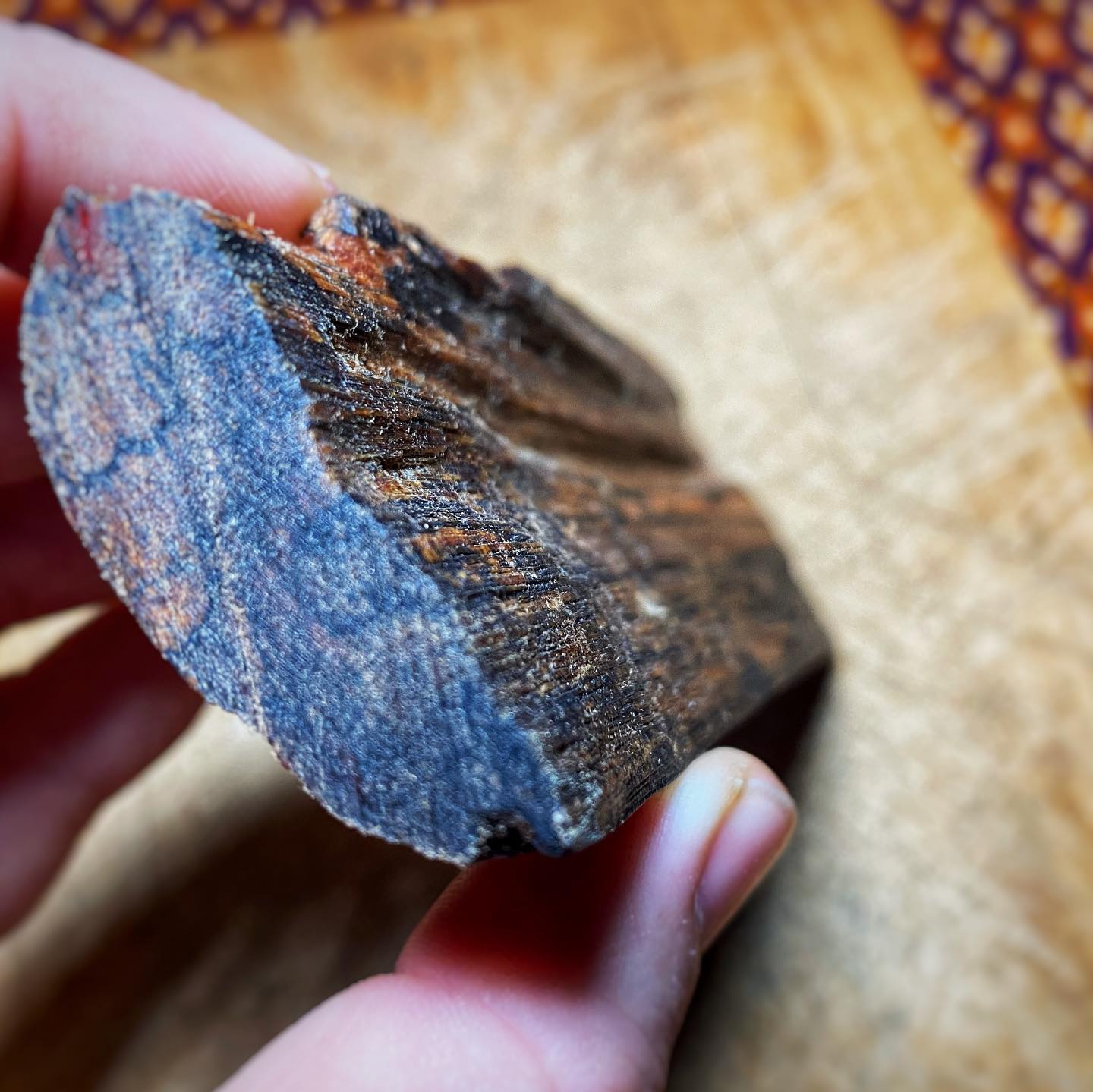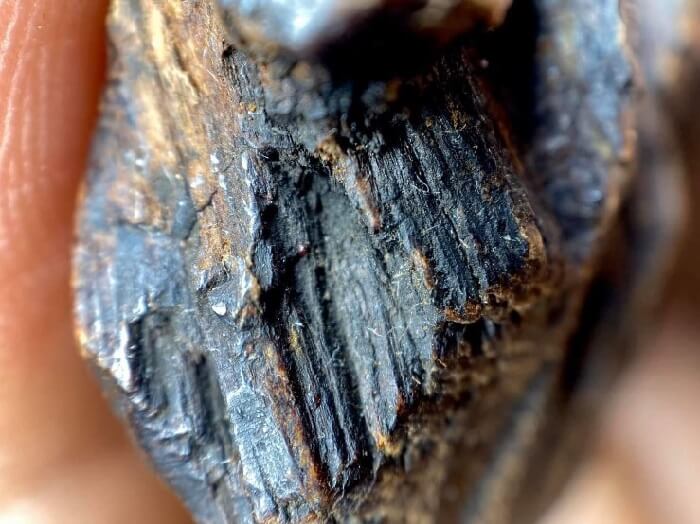
I. Introduction
Table of Contents
ToggleAgarwood, also known as oud or gaharu, is a fragrant dark resinous wood used in incense, perfume, and small carvings. It is formed in the heartwood of Aquilaria trees when they become infected with a type of mold. This precious wood has been highly valued in many cultures for centuries due to its unique aroma and rarity. Understanding the different types of agarwood and their identification is crucial for enthusiasts, traders, and consumers alike.
The importance of identifying different agarwood grades cannot be overstated. High-grade agarwood like kyara agarwood and kynam agarwood are extremely rare and fetch high prices in the market. Accurate identification of agarwood types ensures authenticity, fair trade, and helps in the conservation of endangered species.

“For a comprehensive understanding of agarwood’s overall significance, refer to our Comprehensive Overview of Agarwood.”
II. Understanding Agarwood Grades
The agarwood grading system is essential for categorizing the quality and value of agarwood pieces. Grades are determined based on factors like resin content, scent, color, and overall appearance. Higher resin content typically indicates a higher grade and value.
Several factors affect agarwood grading, including environmental conditions, the age of the tree, and whether the agarwood is from wild or cultivated sources. Wild agarwood tends to have higher resin content due to natural stress factors, whereas cultivated agarwood may have lower grades but is more sustainable. Assessing the quality of agarwood involves understanding its grading system.

“For more detailed information on how agarwood is evaluated, see our article on Evaluating the Quality of Agarwood: Standards and Grading.”
III. Types of Agarwood
A. Kyara Agarwood
Definition and Origin
Kyara (伽羅), derived from the Sanskrit word Kara, meaning “black,” is regarded as the highest grade of agarwood, celebrated for its refined and elegant aroma. Renowned for its rarity and unparalleled quality, Kyara is exclusively found in Vietnam, making it a precious treasure in the world of agarwood.
According to the traditional Japanese incense ceremony known as Kōdō, Kyara’s fragrance is one of the six distinctive types of agarwood classified under the “Five Tastes and Six Countries” (五味六国). The five tastes—sweet, sour, spicy, salty, and bitter—describe the aromatic profiles, while the six countries indicate the regions where these varieties of agarwood are sourced. Among these, Kyara is revered as the finest, embodying a deep, complex aroma that exudes sophistication.

Unique Characteristics
Kyara agarwood is renowned for its distinctive scent profile, which is both complex and subtle. It possesses a sweet, spicy aroma with hints of floral and woody notes. The high resin concentration gives it a dark, dense appearance and an oily texture.
Identification Methods
Identifying kyara agarwood involves sensory evaluation techniques performed by experts. The wood’s scent when heated is the primary indicator of its quality. Additionally, its high market value can be a clue, but buyers must be cautious of imitations. Awareness of the different types and their identification is vital for staying updated on market trends.
B. Kynam Agarwood
Definition and Origin
Kynam agarwood, also known as “Kỳ Nam,” is one of the most sought-after types of agarwood originating from Southeast Asia. Historically, it has been revered for its mystical properties and legendary status among royalty and collectors.
Unique Characteristics
Kynam agarwood is celebrated for its exceptional fragrance complexity, which evolves over time when heated. Its aroma encompasses sweet, bitter, spicy, and sour notes, making it unparalleled among other agarwood types. The wood is extremely rare due to its natural occurrence and the long time it takes to form.

Identification Methods
Due to its scarcity, authentic Kynam is hard to find. Scent testing by experienced connoisseurs is essential. Verification often requires expert assessment and sometimes laboratory analysis to confirm its unique chemical composition. Understanding the types of agarwood can enhance awareness of the health benefits of agarwood.
C. Crassna Agarwood
Definition and Origin
Crassna agarwood comes from the Aquilaria crassna species, native to Indochina regions like Vietnam, Cambodia, and Laos. It is one of the most commonly used species for agarwood production.
Unique Characteristics
Crassna agarwood offers a balanced aroma that is less intense than Kyara or Kynam but still highly valued. Its scent is sweet and warm, suitable for use in traditional medicine and perfumery. The wood has a lighter color and less resin compared to higher grades.

Identification Methods
Identification involves botanical verification of the source species. Visual examination shows a lighter, more striated wood pattern. Olfactory examination reveals a pleasant but less complex scent.
D. Lapnisan Agarwood
Definition and Origin
Lapnisan agarwood is native to the Philippines and is derived from the Aquilaria apiculina species. It holds significant cultural importance and is protected due to its endangered status.
Unique Characteristics
Lapnisan agarwood has a unique scent profile with earthy and woody notes. Its resin properties are distinctive, making it valuable in local traditions. The wood often has a lighter appearance with specific physical traits that set it apart.

Identification Methods
Identifying Lapnisan requires knowledge of its regional sourcing. Since it is protected, laboratory analysis for resin content and species verification is often necessary to ensure compliance with conservation laws.
When comparing different types of agarwood, it’s also insightful to understand how agarwood stands among other fragrant woods. Explore our comparison in Comparing Agarwood with Other Fragrant Woods.
IV. Identification of Agarwood
General Identification Techniques
Proper identification of agarwood is crucial due to its high value and the prevalence of counterfeits. Expert knowledge plays a significant role, as does the use of technological methods like Gas Chromatography-Mass Spectrometry (GC-MS) analysis to identify chemical markers. Proper identification aids in caring for agarwood products, ensuring their longevity.
Physical Characteristics
Visual inspection includes observing the color variations and wood texture. High-grade agarwood is usually darker due to higher resin content. The density test, where the wood sinks in water due to its weight, is another method, known as the sink-float test.

Scent Profile
The olfactory characteristics are paramount in identification. Each type of agarwood has a unique scent when burned or heated. The resin composition directly impacts the aroma, and only trained individuals can accurately distinguish between them.
Resin Content
The amount and distribution of resin are indicative of the wood’s quality. Methods to assess resin content include visual inspection and sometimes cutting a small piece to examine the resin veins.
V. Conclusion
Recap of Different Types and Their Identification
Understanding the various types of agarwood—Kyara agarwood, Kynam agarwood, Crassna agarwood, and Lapnisan agarwood—is essential for anyone involved in its trade or appreciation. Each type has unique characteristics and requires specific methods for identification. Recognizing the differences ensures authenticity and helps maintain the cultural and economic value of this precious resource.
Importance of Proper Identification
Proper identification not only protects consumers but also supports sustainability by discouraging illegal harvesting of endangered species. It ensures that the fragrance industry can continue to enjoy these natural resources without compromising the environment. Ethical sourcing and adherence to international regulations are vital for the conservation of Aquilaria trees.
FAQs
- What criteria are used in the agarwood grading system? Agarwood grades are determined based on resin content, scent quality, color, density, and overall appearance. Higher grades have more resin, a richer aroma, and are often darker and denser.
- Why is sinking agarwood considered the gold standard? Sinking agarwood is so dense with resin that it sinks in water. This high resin saturation indicates superior quality, making it one of the most expensive agarwood types and highly sought after in the market.
- How does the quality of agarwood affect its price per kilogram? The agarwood price per kg varies significantly with quality. Higher-grade agarwood commands higher prices due to its rarity, superior fragrance, and high demand, affecting its overall value.
- What challenges exist in standardizing agarwood grading? Challenges include variations in traditional grading practices across cultures, subjectivity in sensory evaluations, and the need to balance these with modern, standardized approaches for consistency in the global market.
- How can consumers ensure they are purchasing high-quality agarwood? Consumers should seek products that have been evaluated using recognized quality assessment methods, purchase from reputable sources, and may consider certifications or laboratory analyses that confirm the agarwood grades.
Author
Tran Thi Bich Ngoc is the Head of Production at Oudgo, overseeing the entire production process from agarwood harvesting to processing and packaging the final products. She holds a Bachelor’s degree in Biotechnology from Hanoi University of Science and Technology and brings over fifteen years of experience in the agarwood production industry. Prior to joining Oudgo.Ms. Ngoc worked with companies specializing in the production of natural cosmetics and health care products. Her extensive expertise ensures the highest quality and efficiency in Oudgo’s production operations, contributing significantly to the company’s reputation for excellence see more
